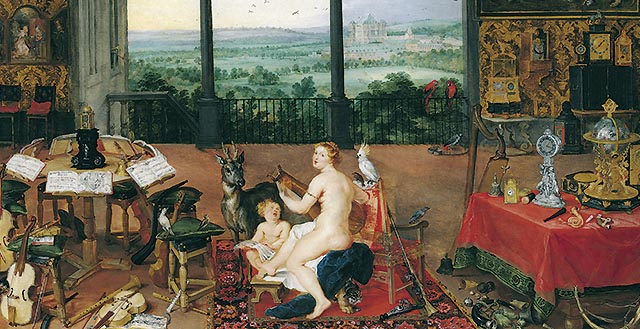
Luxury and the Fleeting Nature of Life – Renaissance and Baroque Clocks
Portable table clocks with ornately decorated cases began to emerge in the 16th and 17th centuries. They served as a way of flaunting wealth and power in the collections of the aristocratic and upper-middle classes, specifically in their art chambers and cabinets of curiosities.
These clocks were the first to be driven by a spring, not by weights, thus making them portable. The precious possession could be taken along on one’s travels or when fleeing (an important advantage in the era of the religious wars).
Hourglasses and candle clocks were used to set time limits. When the sand had finished flowing through an hourglass or a candle had burned itself out, a sermon would have to end, a classroom lesson would be over, or a verdict would have to be reached.
The ever-present threat of disease and war were constant reminders to humans of the fleeting nature of human life. In popular vanitas paintings, ornately decorated table clocks, on one side, candles and hourglasses, on the other, depict the contrast between the pursuit of temporary pleasure and the certainty of death.